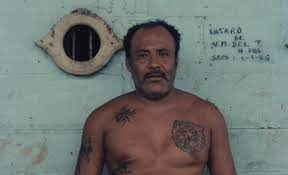Prison is not meant to be a holiday camp but in some countries it’s more like a living hell. Where punishment is the order of the day and rehabilitation isn’t so much as an afterthought. Many of the worst ones are in countries where lawlessness and bribery are rampant. Not to mention good old political and police corruption. Or a broken criminal justice system. South America has historically played host to some of the toughest institutions.
In 1951, the Peruvian government created an open-air penal colony in the Amazonian jungle. SEPA was an experiment where the inmates were allowed to roam freely in exchange for farming the land. No vices, just the open air. The alternatives were overcrowded, inhospitable and riddled with drugs. What happened in the wilderness was kept a closely guarded secret. That was until Walter Saxer’s documentary, SEPA: Nuestro Señor de los Milagros.
Lost for decades, the newly restored SEPA: Nuestro Señor de los Milagros is a fascinating insight into a different way of treating felons. However, even out in the jungle these men’s lives are held to ransom by corruption. Their freedom reliant on money and they’re all but forgotten by the authorities. Saxer, who was Werner Herzog’s long-time producer, employs many of his mentor’s techniques. Creating a film which is both deeply empathetic and thoroughly engrossing.
SEPA: Nuestro Señor de los Milagros is out in US cinemas on 14 October.










No Comment